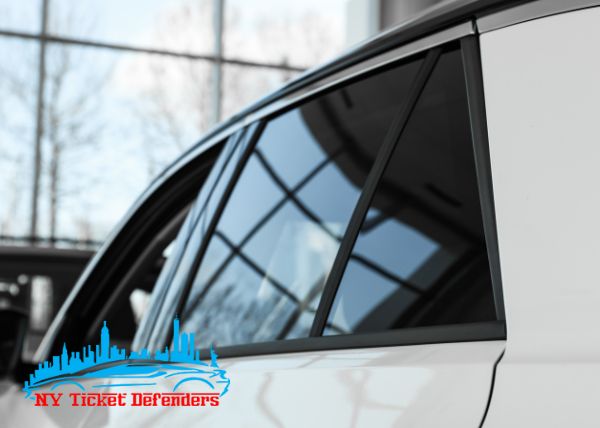Auto Window Tinting: Improve Convenience and Lower Glare While Driving
Auto Window Tinting: Improve Convenience and Lower Glare While Driving
Blog Article
Window Tinting Laws and Standards: What You Required to Know Before Tinting Your Cars And Truck
Before proceeding with home window tinting for your vehicle, it is necessary to familiarize yourself with the varied legislations and guidelines that regulate this practice throughout different states. These laws dictate the allowable levels of color darkness, frequently gauged by noticeable light transmission (VLT) percentages, and consist of specific terms for front windscreens intended at ensuring road safety and security.
Overview of Window Tinting Regulations
Window tinting legislations are frequently based on variation across various territories, mirroring local policies and safety and security considerations. These regulations determine the permitted levels of color darkness and reflectiveness on lorry windows, making certain that vehicle drivers preserve ample visibility while likewise protecting against hazardous UV rays and warm.
Most policies categorize window tinting based on the Visible Light Transmission (VLT) portion, which shows the quantity of light that can travel through the home window. Generally, reduced VLT percentages symbolize darker colors. Legislations typically separate between the front, side, and rear windows, with more stringent restrictions related to the front windshield to enhance safety for both the driver and other roadway individuals.
Furthermore, some jurisdictions impose constraints on the reflectivity of the tint, avoiding excessive glare that can harm exposure. Exceptions to these laws might exist for individuals with details clinical conditions requiring added sun protection. Conformity with home window tinting laws is crucial, as offenses can lead to fines, obligatory removal of the color, and prospective increases in insurance policy premiums. It is important for lorry owners to acquaint themselves with neighborhood regulations prior to proceeding with window tinting installations.
State-by-State Color Regulations
Comprehending the certain window tinting guidelines in each state is vital for automobile owners seeking to abide by the regulation. Each state in the U.S. has developed its very own set of rules governing home window tinting, which can differ substantially. These laws frequently determine the allowed levels of tint darkness, the types of windows that can be tinted, and any kind of clinical exceptions that may use.
As an example, states like California have strict constraints on color darkness for front windows, while others, such as New Mexico, might allow darker tints. In addition, specific states mandate details visibility percentages for different home windows, consisting of the windscreen, front side windows, and rear windows. It is vital for car owners to familiarize themselves with their state's legislations to stay clear of potential penalties or penalties.
Moreover, some states may require an accreditation sticker label to be put on colored home windows, suggesting conformity with state legislations. Failing to stick to these guidelines not just takes the chance of lawful effects yet can additionally influence security and presence while driving. Lorry proprietors must perform complete research study or consult local authorities to ensure full understanding and conformity with state-by-state color guidelines.
Allowed Tint Kinds and levels
Several vehicle proprietors might be amazed to learn that allowed color levels and types differ extensively throughout different states. Each state has actually developed its own regulations pertaining to the allowable darkness and reflectivity of window tint, usually determined by Visible Light Transmission (VLT) percentages. VLT describes the quantity of light that can go through the tinted windows; thus, a reduced percent suggests a darker color.

In addition, the kinds of color products allowed can differ, with some states forbiding metal or mirror-like surfaces. It is vital for car proprietors to acquaint themselves with their state's specific regulations to make sure compliance. Non-compliance can result in penalties, necessary removal of the color, or other lawful repercussions, making it important to understand these guidelines before waging installation.
Medical Exceptions for Tinting
While not all states offer allowances for clinical exemptions pertaining to home window tinting, those that do recognize the requirement for particular people to improve visibility and convenience because of clinical conditions. Different clinical conditions, such as lupus, skin cancer cells, and certain anchor eye conditions, can provide individuals specifically conscious sunlight. These people may require darker colors to protect themselves from dangerous UV rays and glare.

It is essential to keep in mind that despite you can check here a medical exception, there might still be constraints on the level of color permitted. Compliance with state laws makes sure that individuals are both protected and within legal restrictions. Those considering medical exemptions ought to contact their regional Division of Electric motor Vehicles or comparable authority to recognize the treatments and demands essential to request an exemption successfully.
Penalties for Non-Compliance
Failing to follow home window tinting regulations can result in considerable fines, which differ by state. Police are empowered to provide citations for automobiles that do not abide by the defined tinting laws. These penalties usually consist of penalties, which can vary from moderate quantities to numerous hundred bucks, depending on the severity of the violation and the state concerned.
In some territories, duplicated offenses might lead to rising penalties or extra charges, such as required court appearances. Non-compliance might require the removal of illegal tinting, frequently at the owner's cost. In severe cases, regular wrongdoers might face suspension of their car registration until conformity is attained.
In addition, insurance policy ramifications may arise from getting numerous citations for home window tint violations. Insurance providers may watch such violations as an indication of riskier habits, potentially bring about enhanced costs or difficulty in coverage.
To stay clear of these charges, it is important for vehicle proprietors to acquaint themselves with their local home window tinting legislations and guarantee that their vehicle complies (Window Tinting). This aggressive method not only stays clear of legal implications however also advertises road safety
Verdict

A lot of regulations categorize home window tinting based on the Visible Light Transmission (VLT) portion, which suggests the quantity of light that can pass via the home window. Compliance with window tinting policies is crucial, as violations can result in penalties, required elimination of the color, and potential increases in insurance premiums.Understanding the particular window tinting guidelines in each state is essential for car proprietors looking for to conform with the legislation. These laws commonly dictate the allowable degrees of tint darkness, the types of windows that can be tinted, and any type of clinical exceptions that may apply.
For instance, states like The golden state have rigorous restrictions on tint darkness for front home windows, while others, such as New Mexico, may permit darker colors.
Report this page